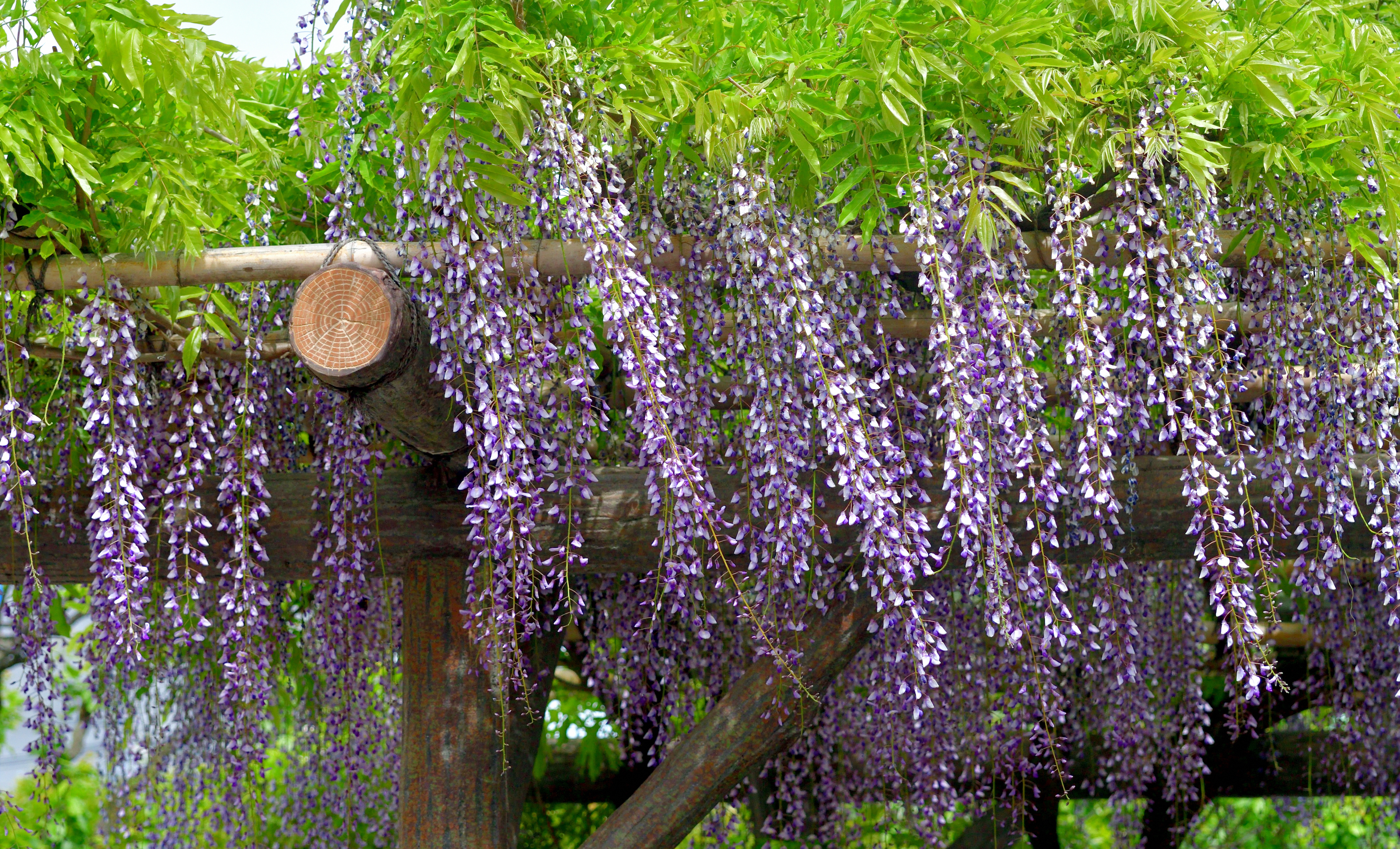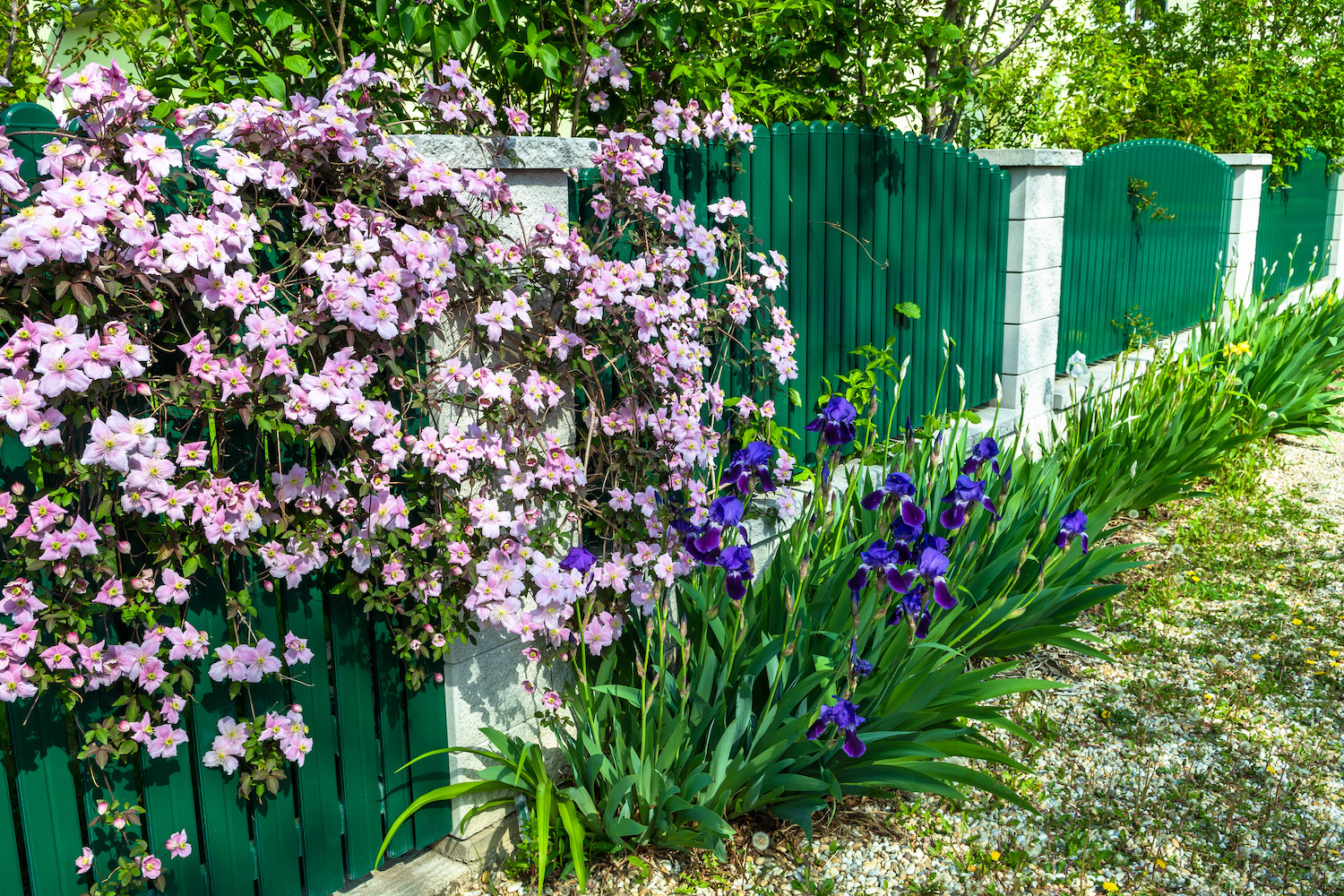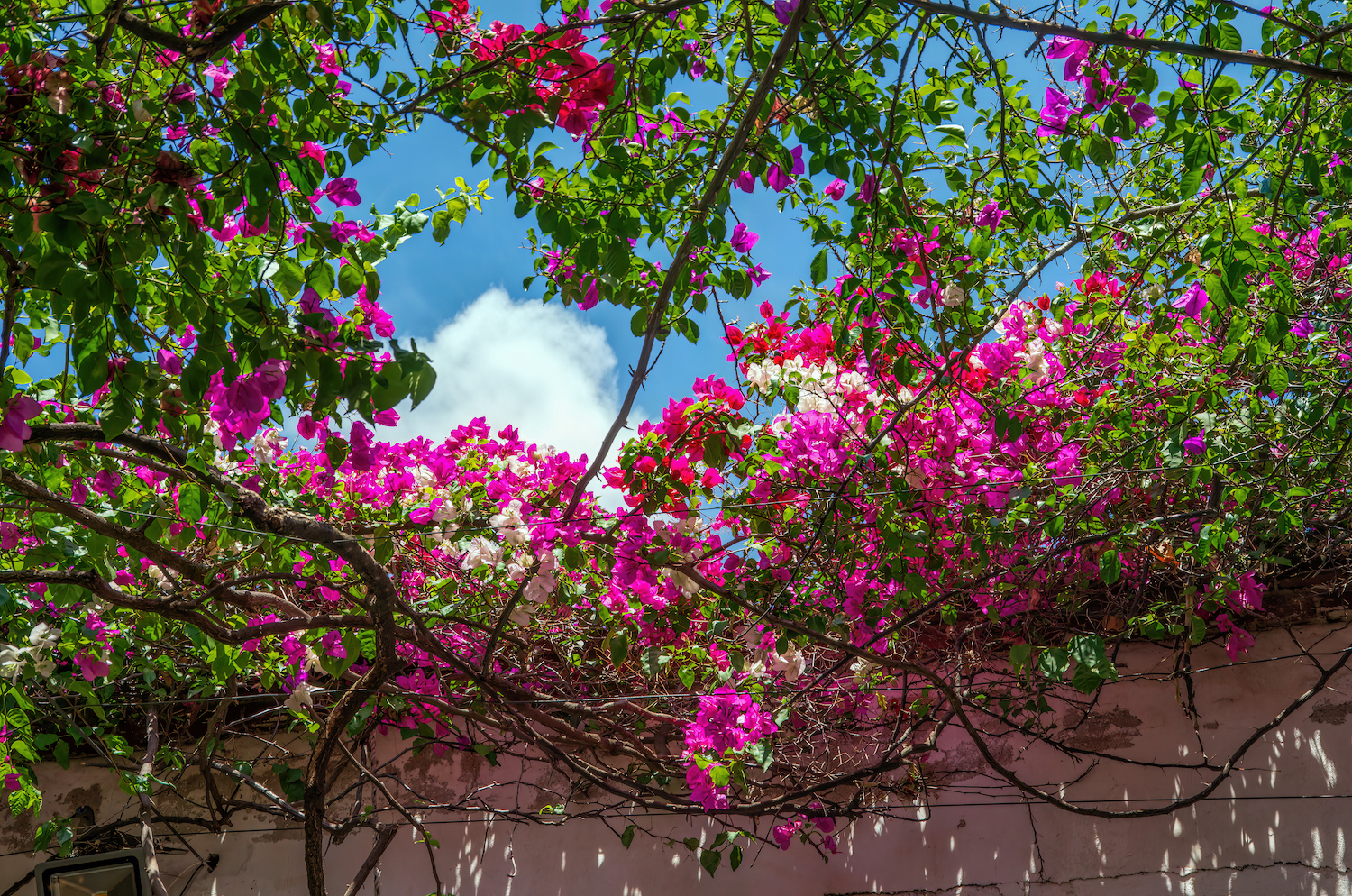5 Fast-Growing Climbing Plants That are Ideal for Privacy — They'll Cover Your Trellis by Next Year
Climbing plants are a great way to add privacy to your yard grown up fences, screens and trellises. But which will grow the quickest?

Climbing plants are a beautiful way to create privacy in a garden. Offering an elegant approach to a practical problem, this flexible foliage can be trained to climb or trail to create a natural screen.
These fast-growing climbing plants for privacy can cover fences, trellises, pergolas and other outdoor structures pronto. There's not much hanging around with these prolific plants.
Whether you want to prevent overlooking from neighboring properties, or to section off parts of your yard for socializing, these vigorous vines will flourish quickly once established.
As with any kind of planting, check what will grow well in your USDA Plant Hardiness zone, before selecting, as this will yield the best results.
1. Wisteria frutescens

Wisteria is a fast-grower, but if you're expecting blooms of lilac next spring, be warned — it can take three to five years for it to flower. If you're happy with a green screen of foliage in the meantime, this is one of the best plants to cover a fence or trellis. Eventually you'll be rewarded with its beautiful cascading lilac or white flowers.
Look for "American wisteria" (like this plant from Amazon) as other types can be invasive, and be prepared to maintain this plant. It requires pruning twice a year and loves sunshine.
'American Wisteria appreciates full to partial sun,' says Tamara Hogan, plant expert, Fast Growing Trees. 'As long as it's getting 6+ hours a day, that will be enough to promote growth and blooms.
The Livingetc newsletters are your inside source for what’s shaping interiors now - and what’s next. Discover trend forecasts, smart style ideas, and curated shopping inspiration that brings design to life. Subscribe today and stay ahead of the curve.
'I would advise planting it in early spring, so the plant has time to grow throughout the year and has a chance to establish. During the fall, after summer heat, is a good time to plant as well. This Wisteria will need support in order to climb so a trellis or similar support is highly recommended.
'Wisteria grows its blooms on new wood. Consider this when pruning since it needs some established branches for new growth to grow on. Pruning once the plant is fully dormant is great to allow time for new buds to develop.
'Pruning into spring time after bud break will remove blooms for the season. First remove any dead tissue or damaged tissue. Next, cut back any overly vigorous growth that might become a problem as it grows.
'This is a great pick for someone who doesn’t have space for a wisteria to go wild. Pruning is more as a support for the plant versus a need to control height. So if you do need to do a big haircut, don’t do more than 30% of the canopy at a time.'
2. Clematis

This popular plant is known as "The Queen of Climbers", due to its abundant blooms and easy-care lack of demands. There's an abundance of choice too, with cultivars in a cross section of colors, from pink and purple to white and striped.
Depending on your aspect, there are vine types that are adapted to sunny spots or shady gardens, alongside those that will flower in winter and spring or summer and autumn too. Try this Toki Clematis from Walmart if you're looking for dramatic blooms.
'The main reason clematis are sought after is the amount of visual presence they have for the relative ease of the plant,' says Tamara. 'Unlike wisterias or other vines that can require a lot of pruning, clematis grow at a good moderate speed and are easy to support with garden trellis or wires.
'Pruning is more of a 'when needed' process rather than a necessity. Putting clematis in the right spot is the biggest hurdle. After that, keep things watered and keep an eye out for potential pests but that’s about it.
'Clematis can tolerate cooler climates too which some of the other flowering vines can’t handle. The plants enjoy full sun to part shade.
'In hotter climates, it’s best to give them protection from afternoon sun. If you are going to plant them in full sun, clematis will appreciate mulched roots to help retain moisture during the summer months. Adding a companion plant of a ground cover can also help protect their roots if you don't mulch them.'
3. Bougainvillea

Long associated with balmy Mediterranean destinations, Bougainvillea looks beautiful trailing over traditional, white-washed buildings with its profusions of intensely colored flowers, often pink, but you'll find yellow and orange blooms too on certain Bougainvillea (like this one from Amazon). Unsurprisingly, this plant loves the sun and requires a minimum night temperature of 50ºF (10ºC).
A classic climber, Bougainvillea can be trained over fences, trellises and other structures like pergolas, and is best suited to those who live in warmer parts of the world, as this plant must be kept frost-free in winter.
'Bougainvillea does best in zone 9-10, with some varieties doing best in 10-11,' advises Tamara. 'Spring is the best time to plant, with Fall being the next best choice.
'Give your Bougainvillea a full sun environment to promote good blooms since the better light it has, the more energy the plant can put towards flowering.
'Water it regularly and deeply but allow for the soil to dry out between waterings, so the roots have a chance to develop better. Pruning is best to be done with gloves since Bougainvillea can have thorns. Fertilize after the first year and keep a consistent schedule through spring.
'Bougainvillea are great for potted patio plantings in zones 4-9. They will need support with a trellis that needs to be kept in the pot. Your plants will need to be brought in when temperatures are getting below 50 degrees consistently.
'Bougainvillea still need full sun indoors, so place near a south/west window, and monitor the soil. Plants in winter naturally slow down so let your plants use the water that you give them before adding more. Test with your finger 2-3 inches down and if dry, do a deep water to take care of the root ball.'
4. Honeysuckle

With its pretty trumpet-like blooms, climbing honeysuckle offers a charming country cottage look. Its thin, twining stems can be trained around numerous supports to provide scented shade, as well as privacy under a pergola, sectioned seating area or adjoining property.
Fragrant flowers will attract more pollinators, however not all types of climbing honeysuckle are scented, so consider this when choosing the variety if you're looking to help out beneficial garden insects. Colors vary wildly too, from rich, vibrant reds, pinks and oranges to delicate creamy whites and pale yellows.
Honeysuckle is adaptable to most soil types, although will struggle if it's too wet or too dry.
'Japanese Honeysuckles (or Lonicera japonica like this from Amazon) are particularly popular for their ease of care,' says Tamara. 'They are adaptable for a variety of soil environments and are drought tolerant once established.
'Common Honeysuckle (Lonicera periclymenum) is another class of climbing honeysuckle that does well after establishment.
'Planting in spring before the summer heat waves come, or in fall after the summer heat has passed are both great times to plant honeysuckle. I would recommend a root stimulator for planting either time to help either prep the plant for heat or help it go into dormancy better.'
5. Jasmine

For many, Jasmine, with its pretty fragrant flowers, is the scent of summer. However there are beautiful winter flowering varieties too.
'Carolina jasmine (which you can find at Walmart) is an evergreen vine so it will provide great privacy even during the winter months,' advises Tamara. 'It's a vigorous growing vine that will fill in an arbor or trellis over a few years.
'This combination of consistent growth with evergreen foliage lets you have a great option for privacy around your patio, property line, or even just to provide interest near your house.
'Carolina jasmine are a great vine to plant since they are lower maintenance than flowering vines like wisteria. They will do best in zones 7-10 planted in areas of full sun to part shade.'
'A well draining soil helps to promote good root health. Once established after the first year, these jasmines are fairly drought tolerant. But it is still advised to keep a good watering schedule to provide enough water and resources for blooms throughout summer.'
Jacky Parker is a freelance lifestyle journalist and writer, producing a wide range of features for magazines and digital platforms. She has written for Livingetc and its sister titles, Homes & Gardens and Country Homes & Interiors for more than 15 years, both as a freelance contributor and as Acting Digital Editor and Acting Style Content Editor, regularly reporting on the latest interiors, gardens and wellness inspiration, speaking to experts in their respective fields, and discovering the best tips.
Jacky has also written for other publications, including Sunday Times Style, The Telegraph, Architectural Digest, House Beautiful, ELLE Decoration, Red, Grand Designs and more.